One of the great things about gardening is that you can grow vegetables in any container. Plenty of vegetables grow well in small spaces, whether a small pot on your windowsill or a large garden plot. And one of the most popular vegetables to grow in containers is root vegetables. Root vegetables are great for small spaces, as they take up minimal space and provide plenty of nutrients and flavor.
Benefits of including root vegetables in your container garden include increased production, decreased water usage, and improved soil health. Increased production can result from better air and soil circulation, encouraging larger root systems and higher yields. Decreased water usage is because the plants grow close to each other, requiring less water per unit area than plants growing further away. Improved soil health is achieved through better drainage, more efficient use of nutrients, and reduced susceptibility to pests and diseases.
Best root vegetables for containers
Potatoes
Potatoes are the most popular vegetables to grow in containers because they tolerate various soil conditions and can be grown in various climates. They also produce delicious, nutrient-rich Potatoes that can last up to three months when stored properly. Start your Potato plants by planting small seed Potatoes in pots filled with good-quality soil mix.
If you are growing your Potatoes in a container, ensure adequate soil depth and good drainage so the roots do not get waterlogged. You can also plant your Potatoes in rows rather than spaces, which will help them stay more organized while they grow.
When planting your Potatoes in a container, be sure to place the container in a sunny spot so that the Potato plants receive plenty of sunlight. To grow Potatoes successfully indoors, start by choosing a pot at least 18 inches wide and 12 inches deep so that there is plenty of space for the roots to grow. Plant your Potatoes directly into the soil at the bottom of the pot and spread their roots as much as possible.
Carrots
Carrots are a great vegetable in containers because they’re fast and easy to grow. They can be grown in various containers, including pots, hanging baskets, and trowels. The key is to provide plenty of fresh water and fertilizers and to keep the soil moist. Carrots are also resistant to many disorders, so they can be the best choice for beginners or container gardeners who want an easy crop to manage.
In case you missed it: 18 Vegetables for Container Gardening: Top Best List for Beginners
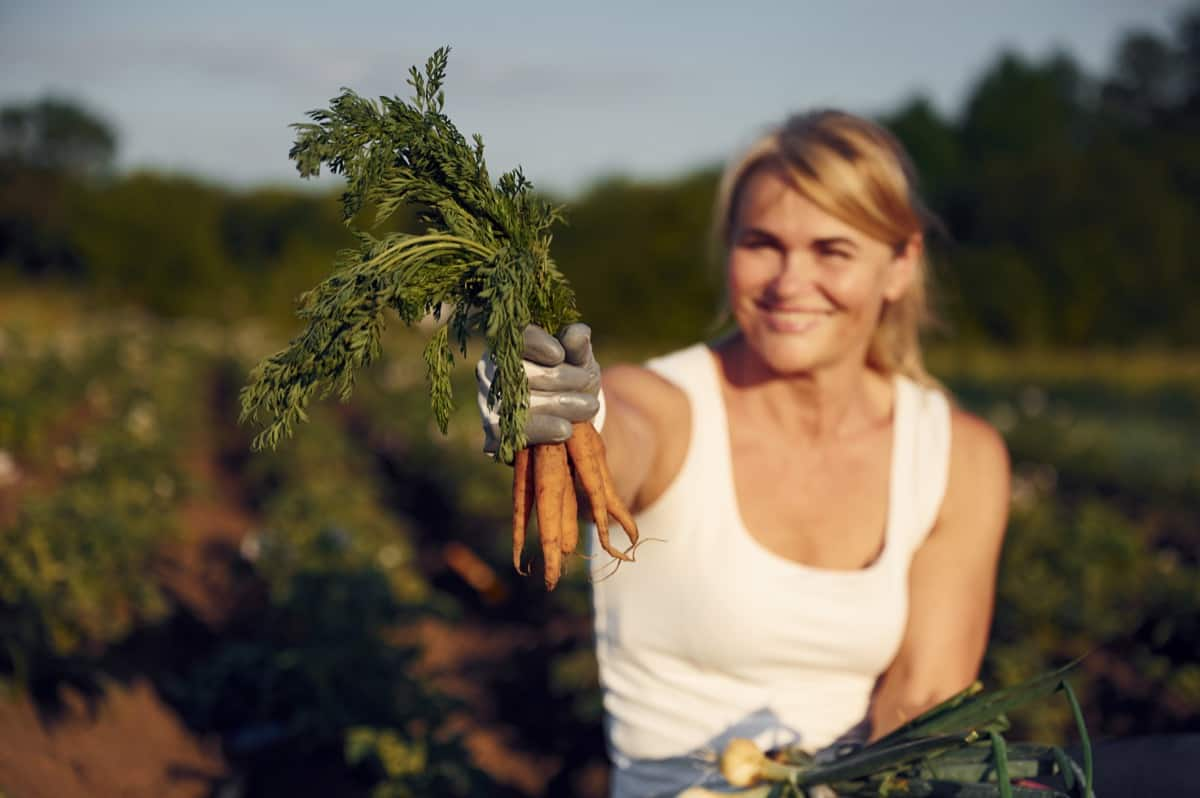
Carrots are one of the most commonly grown root vegetables in containers. They can be grown in various soils but prefer moist soil with some sand or compost added. Carrots should be planted at a depth of about 2 inches and spaced about 12-18 inches apart. They mature in about 70 days and can be harvested when they reach an inch or two in diameter.
Beets
Beets are the best vegetable to grow in containers because they are fast-growing, easy to care for, and have a long shelf life. They can be grown in pots or a garden bed and harvested young or older. They can also be grown in a wide range of climates, making them a good choice for areas that may be cold or hot during the summer months.
In case you missed it: Cool-season Plants for Pollinators: Vegetables, Flowers, Fruits, Shrubs, and Herbs
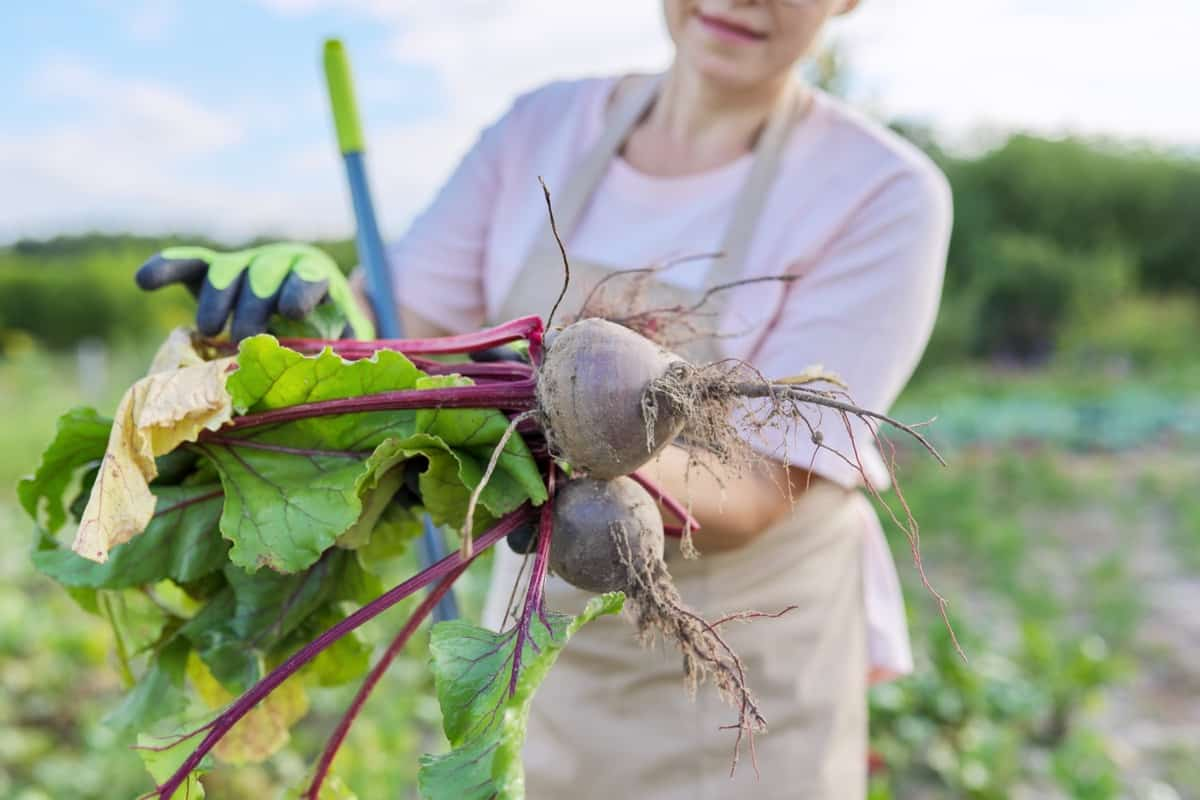
Beets are low-maintenance vegetables, requiring only routine watering and fertilization. Beets are fast-growing, productive plants that can be grown outdoors in warm or cold climates. Beets grow best in loose, well-drained soil that is moist but not wet. Beets also prefer full sun exposure but can tolerate some shade.
Ginger
Some root vegetables are perfect for container gardening. Ginger is a hardy vegetable that can grow in most soils and climates. It can be grown as a perennial, but it is better to start it from seed to get a good crop of roots. Ginger is a perennial root vegetable that can be easily grown in containers. These vegetables are great for those who want fresh vegetables without spending a lot of time and energy growing them.
Additionally, these vegetables are easy to store and provide sustained nutrition over a long period. When choosing Ginger for container gardening, select a cultivar tolerant of cold climates. When planting Ginger in containers, prepare the soil by adding organic matter. Once the soil is prepared, add 1 inch of organic mulch around the plants.
Radish
Radishes are a great root vegetable for containers because they grow quickly and are easy to care for. Depending on the variety, they can be grown in various soil types and have a mild or strong flavor. To grow Radishes in your container, choose a pot that will fit the plants well. Some popular types of containers for Radishes include clay pots, plastic pots with drainage holes, and large potted plants like Tomatoes or Peppers.
In case you missed it: Grow Bag Size Chart in India: For Vegetables, Herbs, and Fruits
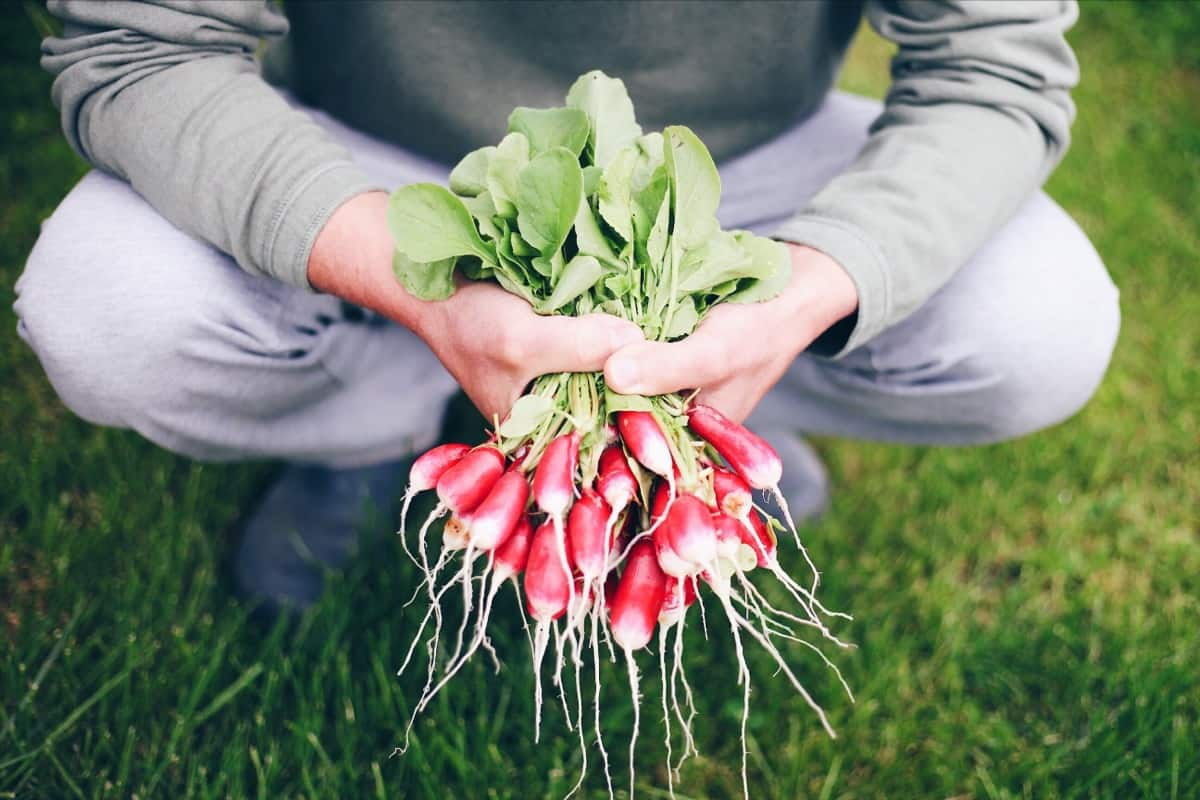
Add some organic matter to the soil around the roots of the Radish plants before planting them. A good option is to add compost or manure to the soil. This will help promote healthy growth and root development in the plants. Water your plants regularly during the growing season, and fertilize them with a liquid fertilizer every few weeks. Keep an eye on your Radishes throughout summer to ensure they don’t become too big or floppy. If necessary, thin out overcrowded plants by snipping off unwanted ones with a sharp knife.
Green Onions
Root vegetables are the best vegetables to grow in containers. They are fast-growing and easy to care for, so you can enjoy their delicious flavors in your garden or container. A few root vegetables are great candidates for growing in containers. One of the best options is Green Onions. They are easy to grow and don’t require much attention once established in the garden or container. You can grow Green Onions in a pot, on a windowsill, or even in the ground.
In case you missed it: How to Start a Terrace Garden From Scratch in Delhi: For Vegetables, Flowers, Herbs, and Fruits
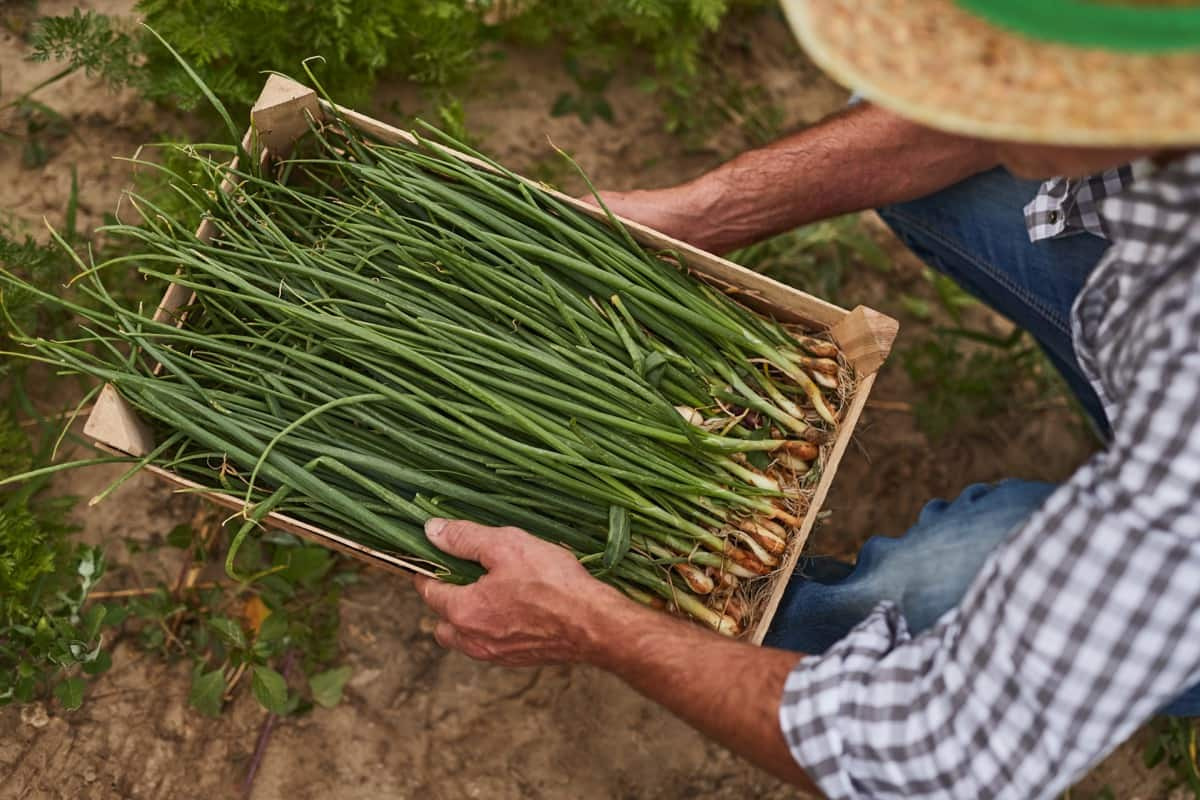
Once the plants have rooted themselves, you need to fertilize them regularly with a low-nitrogen fertilizer designed explicitly for Tomatoes and other vegetables. Be sure to water them consistently throughout the summer, so they remain healthy and productive. If you live in harsh winter weather, protect your Green Onions by covering them with plastic wrap during colder temperatures.
Turnip
Turnips are an excellent choice for container gardens because they grow quickly and are easy to manage. They can be grown in a wide range of soils so that you can find the best for your garden. The roots can also be stored in the ground over winter, which makes them an excellent choice for people who want to get their vegetables on the table early in the season.
In case you missed it: How to Grow and Care for Brussels Sprouts in Containers: Step-By-Step Planting Process for Beginners
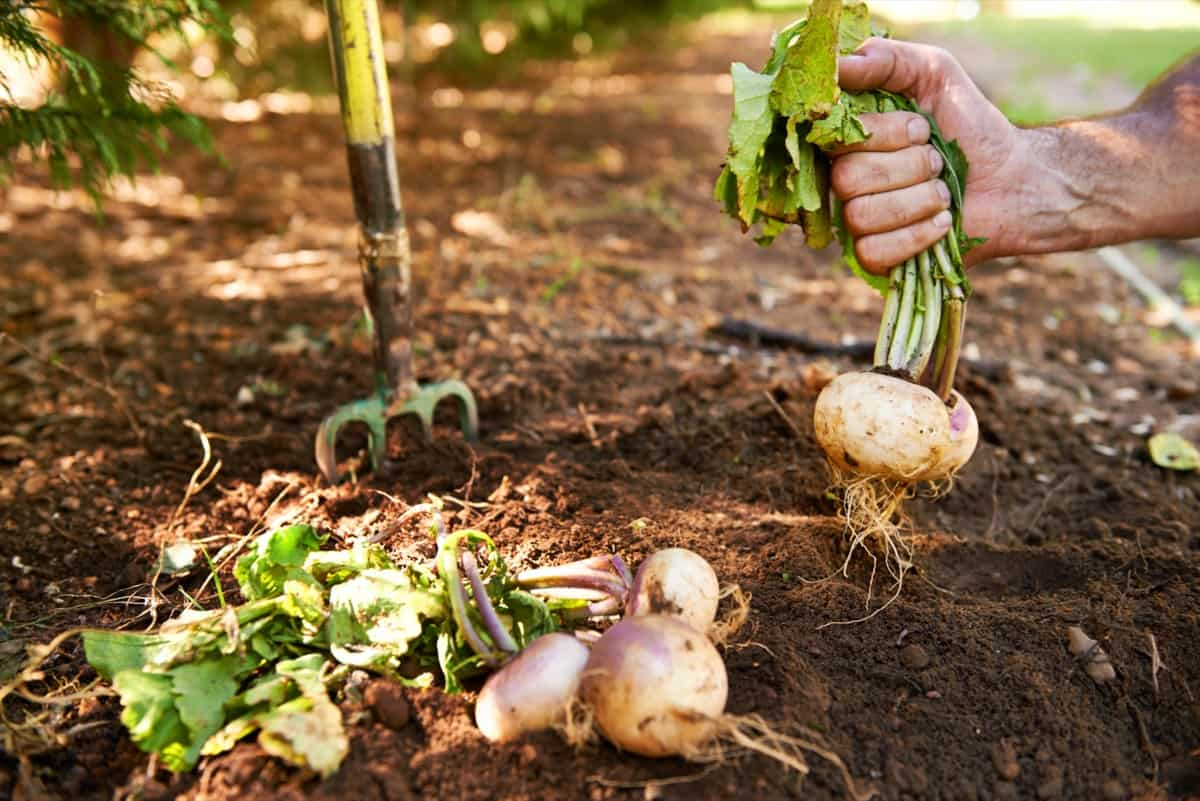
Turnips are a great root vegetable for containers that are fast and easy to grow. They are a good choice for new gardeners who want an easy crop. They can be grown in almost any type of soil, but they prefer fertile, well-drained soil. Turnips do best in warm climates but can be successfully grown in cold climates if they are started early enough in the season.
Select a resistant variety that is hardy to your ararea’slimate to grow Turnips. Turnip seeds should be planted ¼ inch deep and 8 inches apart in rows. Once the plants have reached 6 inches tall, thin them to 3 to 4 plants per container. Harvest the Turnips when they reach about 2 feet tall and have a nice green color.
Horseradish
Horseradish is a root vegetable that can be grown in containers. It is easy to grow and has a short growing season, making it a good choice for people who want to garden in small spaces. Horseradish is also fast-growing, so it will not take long to start. When growing Horseradish, be sure to provide plenty of sun and water.
It can be grown in various temperatures and soil types, making it the perfect choice for those who want a quick and easy crop. Horseradish is also great for growing in small spaces, as it takes up very little space. Choose a container at least 12 inches in diameter and 18 inches deep to grow Horseradish in containers. You will also need potting soil or sand, water, and Horseradish seeds. To plant the seeds, place them into the soil and water them well.
Sweet Potato
Sweet Potatoes are a great choice for containers that are fast and easy to grow. They can be planted in almost any soil type, and they typically grow in a short time frame. Sweet Potatoes can also be planted in a container directly outside the garden, making them an excellent option for those who want to garden without spending a lot of time tending to the plants.
In case you missed it: 16 Best Evergreen Flowering Shrubs for Hedges
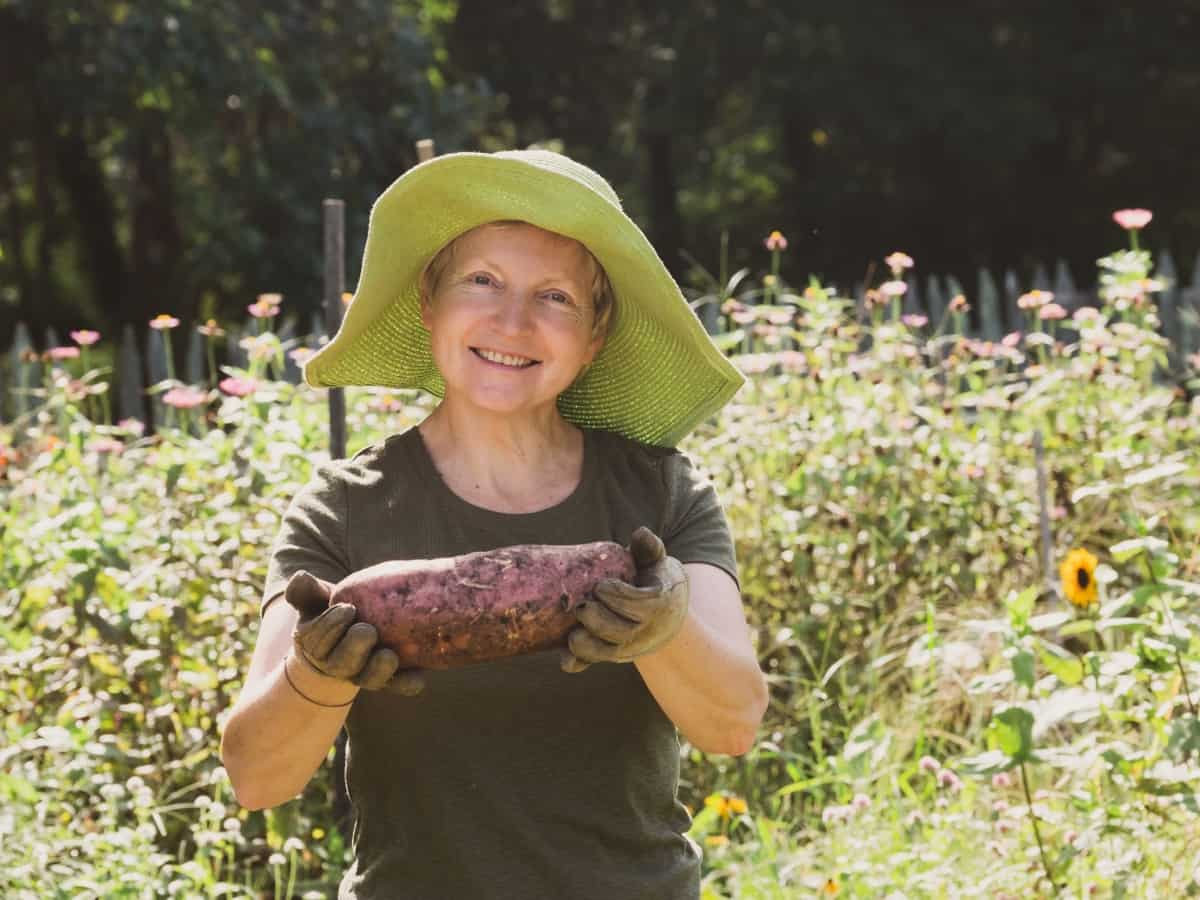
They are easy to grow, fast-growing, and have a long shelf life. Sweet Potatoes can be grown in containers, including tubs, planters, and barrels. The best way to plant Sweet Potatoes is in the early fall when the ground is still warm. You can plant them directly into the soil or use a container planting mix. Once planted, water the Sweet Potato plants regularly and fertilize them when necessary. Keep an eye on them, and harvest your Sweet Potatoes when they are large enough to fit through your fingers.
Taro
A few root vegetables are great for container gardens because they require little care, grow quickly, and are relatively easy to find in stores. One of the best root vegetables for container gardens is the Taro. Taro is a tuberous plant that grows in the warm climates of the tropics. To grow Taro in containers, you need to start with a seed or buy a tuber from a store. Plant the tuber in soil mixed with some compost and water it well.
Once the tuber has started to grow, it will need water every week or so; otherwise, it should be left alone. To start growing your Taro plants, yoyou’lleed a pot at least 12 inches deep and 18 inches in diameter. You can also use an 8-inch pot to plant fewer Taro plants. Once yoyou’vehosen your pot, add enough soil until it reaches the top of the pot. Make sure the soil is evenly moistened before planting your Taro seeds. The best time to plant your Taro seeds is early in the morning or late in the evening.
Conclusion
Several vegetables are good for container gardening because they are fast-growing and easy to care for. Gardening can be a worthwhile experience, but it can also be expensive. ThThat’shy itit’smportant to choose the right plants for your container garden, and root vegetables are a great option because they dodon’teed as much attention from you as other plants do. Each one is suited to a particular type of container and will reward you with bumper crops in a short amount of time.
- Flower Garden Designs and Layouts for Beginners
- Planting and Spacing Techniques in Papaya: A Beginner’s Guide
- Growing Gold: Essential Techniques for Planting Pineapples
- How to Make Kalanchoe Plant Bushy: Home Remedies and Solutions
- 11 Reasons Why Your Gardenia is Not Blooming: Home Remedies and Solutions
- Eco Elegance: The Guide to Designing a Drought-Tolerant Landscape
- Gardening on a Slope: Strategies for Hillside Landscaping
- Nourish and Flourish: Top Organic Mulches for Thriving House Plants
- Everything You Want to Know about Indian Mogra Flower: Discover Uses and Growing
- Green Thumb Success: Expert Tips for Cultivating Greenhouse Pumpkins All Year Round
- Maximize Growth & Flavor: The Ultimate Guide to Companion Planting in Herb Gardens
- How to Control Rhododendron Problems Naturally: Home Remedies and Organic Ways to Fix Them
- Natural Magic: The Remarkable Benefits of Cinnamon for Plants
- Best Steps to Revive Dying Tulip with Natural and Organic Treatment
- 10 Reasons Why Your Angel Trumpet is Not Blooming: Remedies and Treatment
- How to Fix Periwinkle Leaf and Flower-Related Problems: Natural Remedies and Solutions
- How to Fix Zinnias Leaf and Flower Problems: Discover Natural and Home Remedies
- Organic Steps to Induce Lemon Tree Flowers: A Comprehensive Guide
- Bloom Booster: Crafting the Perfect Homemade Bougainvillea Fertilizer
- Optimizing Growth: A Guide to Applying NPK Fertilizer for Potted Plants
- 10 Best Homemade Fertilizers for Rubber Plant: DIY Recipes and Application Method
- How to Boost Female Pumpkin Flowers: Effective Steps for More Flowers and High Yields
- Transform Your Indoor Garden: Top Benefits of Pink Salt for Houseplants
- 10 Best Homemade Fertilizers for Peacock Plants (Calathea): Easy DIY Guide
- Unlock Blooms: 9 Reasons Why Your Potted Chrysanthemum is Not Blooming
- 8 Reasons Why Your Potted Hibiscus is Not Blooming: Fix it with Simple Solutions
- Unlock Blooms: 9 Key Reasons Your Potted Frangipani Won’t Flower
- 10 Reasons Why Is My Ice Plant Not Blooming: Remedies and Treatment
- 10 Reasons Why My Potted Hydrangea Not Blooming: Treatment and Remedies
- 10 Reasons Why is My Wisteria Not Blooming: Remedies and Treatment
- 10 Reasons Why is My Goldfish Plant Not Blooming: Remedies and Treatment
- Maximize Your Space: Ultimate Guide to Balcony Gardening with Grow Bags
- 10 Reasons Why Your Iris is Not Blooming: Remedies and Treatment
- 10 Reasons Why Your Anthurium Plant is Not Blooming: Treatment and Remedies
- 10 Reasons Why Your Aquaponic Plants Are Not Flowering: Remedies and Treatment
- 10 Reasons Why Your Agapanthus is Not Flowering: Remedies and Treatment